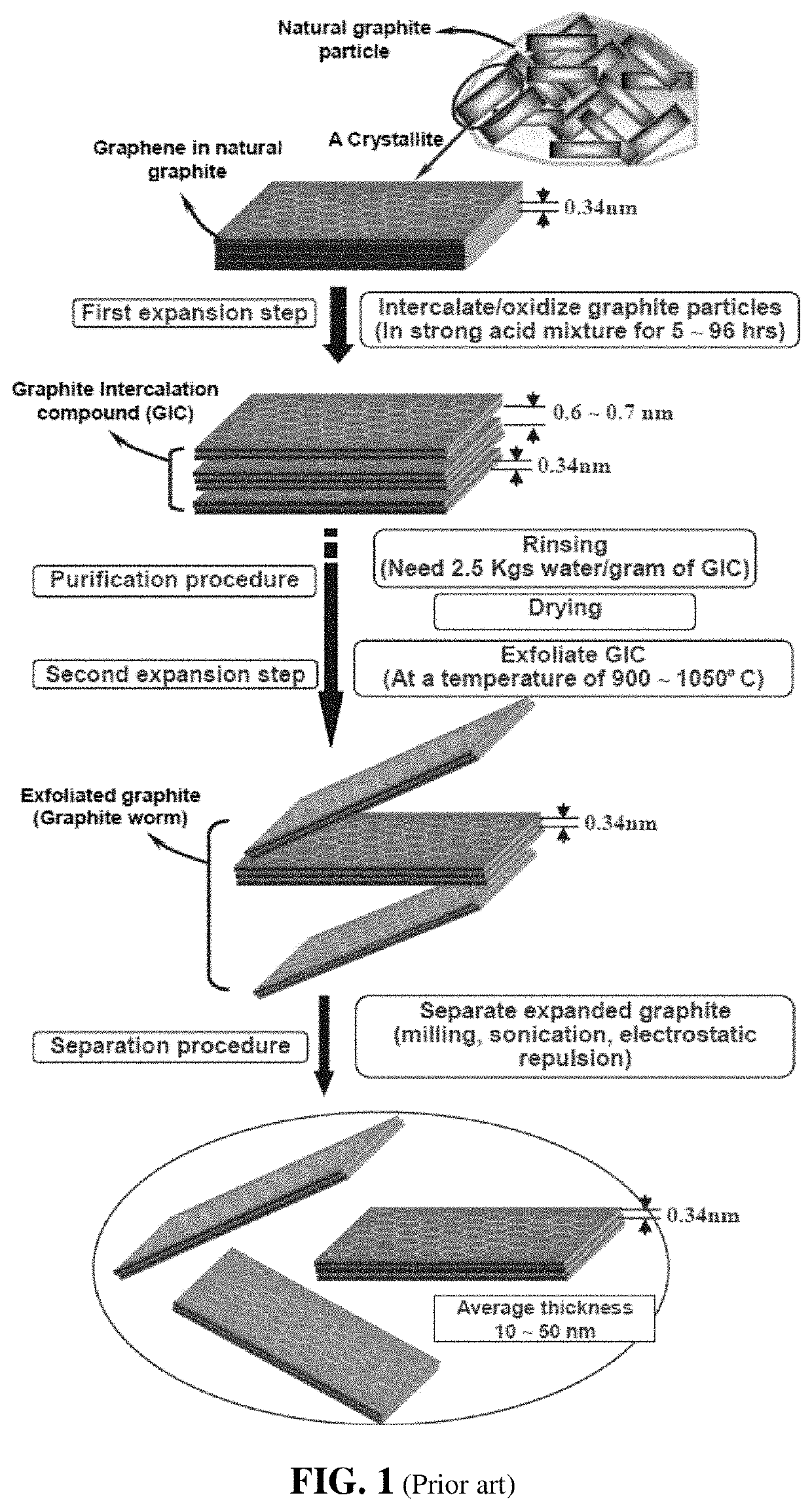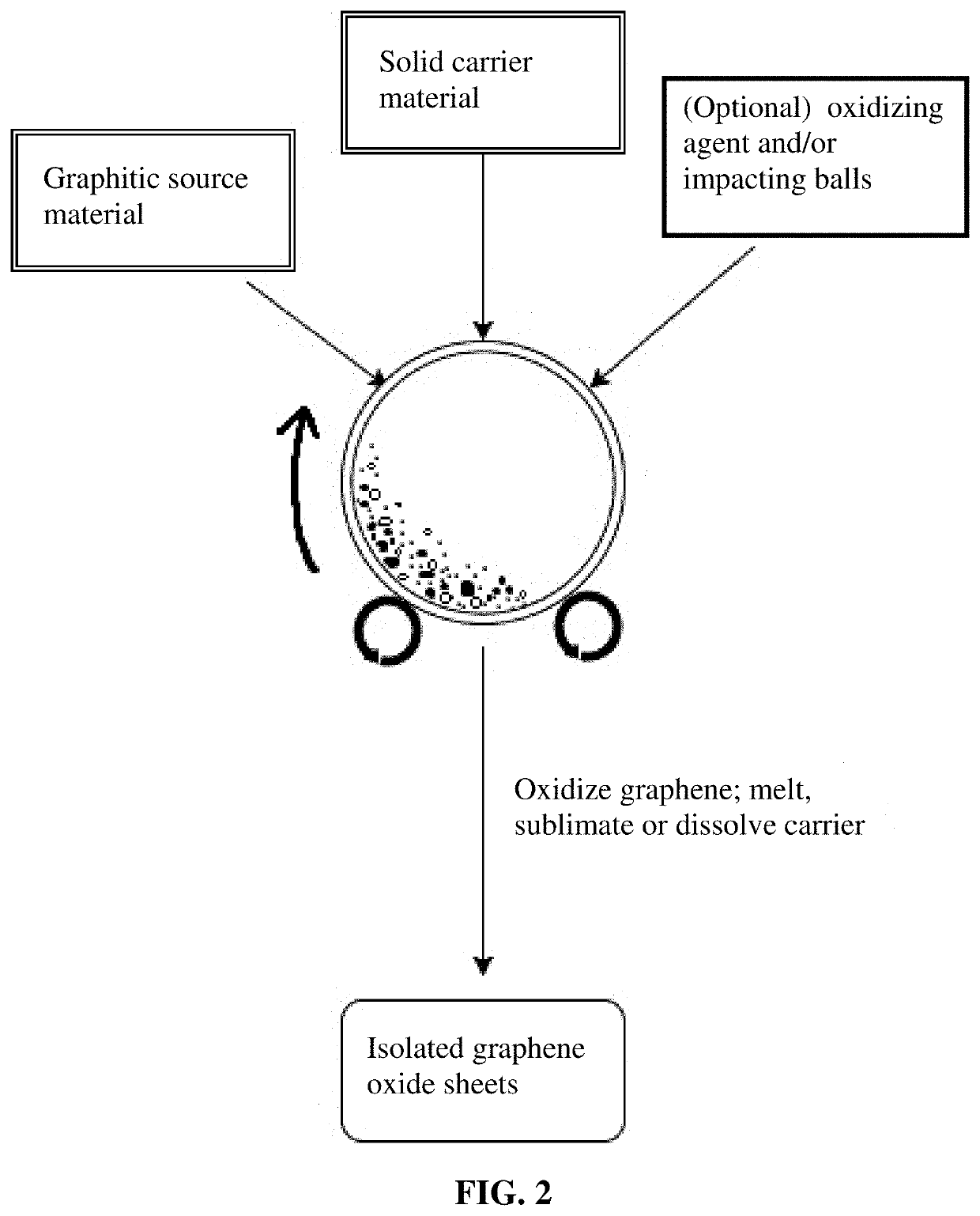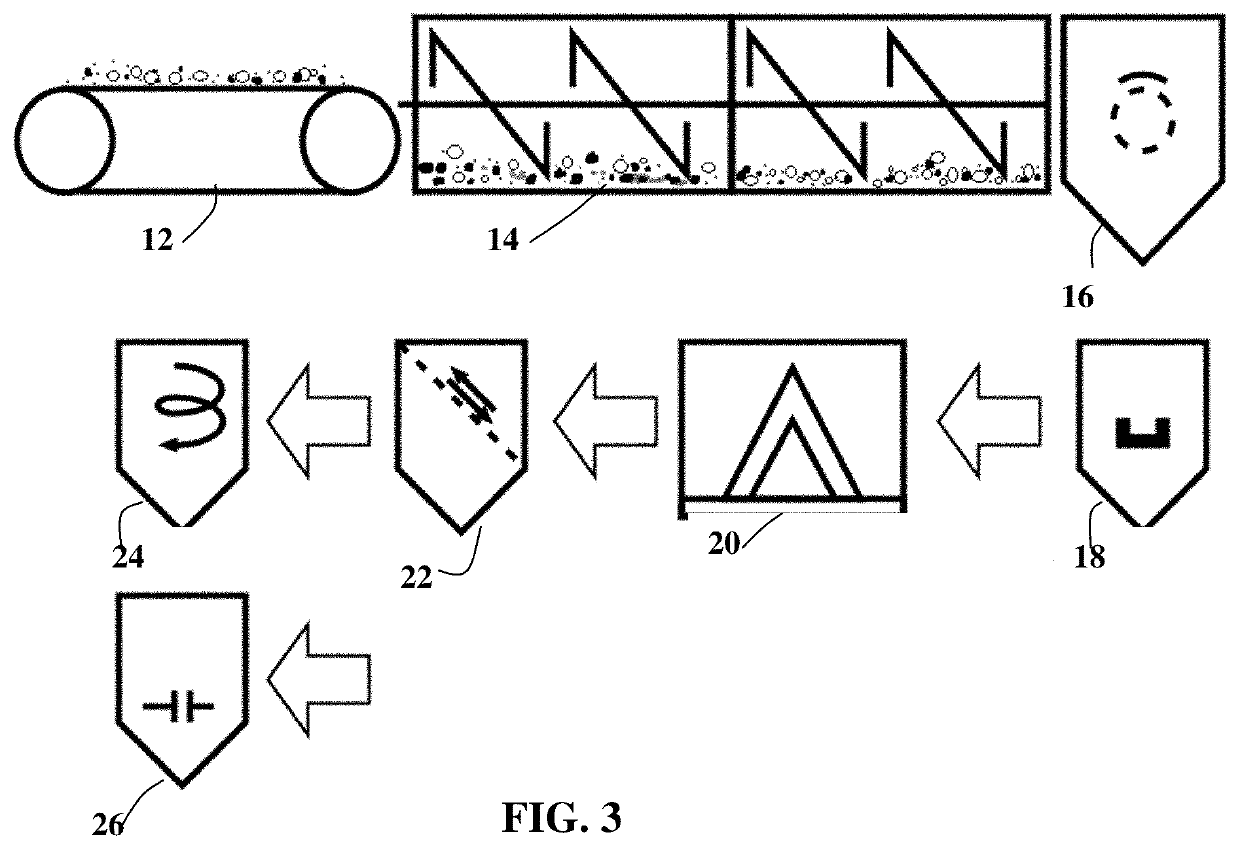Environmentally benign production of graphene oxide
a graphene oxide, environmental protection technology, applied in the direction of nanotechnology, material nanotechnology, nano-carbon, etc., can solve the problems of high energy consumption, high concentration of concentrated acid and oxidizer, and high cost, and achieve the effects of maximizing burnout, maximizing solubility, and cost-effectiveness
- Summary
- Abstract
- Description
- Claims
- Application Information
AI Technical Summary
Benefits of technology
Problems solved by technology
Method used
Image
Examples
example 1
Isolated Graphene and Graphene Oxide Sheets from Flake Graphite Via Polypropylene Powder-Based Carrier
[0080]In an experiment, 1 kg of polypropylene pellets, 50 grams of flake graphite, 50 mesh (average particle size 0.18 mm; Asbury Carbons, Asbury N.J.) and 250 grams of magnetic stainless steel pins (Raytech Industries, Middletown Conn.) were placed in a ball mill container. The ball mill was operated at 300 rpm for 4 hours. The container lid was removed and stainless steel pins were removed via a magnet. The polymer carrier material was found to be coated with a dark carbon layer. Carrier material was placed over a 50 mesh sieve and a small amount of unprocessed flake graphite was removed.
[0081]Subsequently, two separate procedures were conducted to produce isolated graphene oxide sheets. One procedure involved placing coated carrier material in a crucible in a vented furnace at 600° C. to burn off PP for obtaining isolated graphene sheets. The graphene sheets were then immersed in...
example 2
Graphene Oxide from Expanded Graphite Via ABS Polymer
[0084]In an experiment, 100 grams of ABS pellets, as solid carrier material particles, were placed in a 16 oz plastic container along with 5 grams of natural graphite. This container was placed in an acoustic mixing unit (Resodyn Acoustic mixer), and processed for 30 minutes. After processing, carrier material was found to be coated with a thin layer of graphene.
[0085]Graphene-coated carrier particles were then immersed in a mixture of sulfuric acid and potassium permanganate (graphene / sulfuric acid / potassium permanganate ratio of 1.0 / 1.0 / 0.5) and subjected to ultrasound energy to speed oxidation of graphene and separation of resulting GO sheets from the ABS particles. The solution was filtered using an appropriate filter and washed with distilled water. Subsequent to washing, filtrate was dried in a vacuum oven set at 60° C. for 2 hours.
[0086]It may be noted that the conventional Hummer's method typically requires the use of 24 m...
example 3
Functionalized Graphene from Mesocarbon Micro Beads (MCMBs) Via PLA
[0087]In one example, 100 grams of PLA pellets (carrier material), 2 grams of MCMBs (China Steel Chemical Co., Taiwan), and 2 grams of carboxylic acid (an oxidizing agent) were placed in a vibratory ball mill, which also contains particles of magnetic stainless steel impactor and processed for 1 hour to obtain graphene oxide-coated PLA particles. Subsequently, DETA was added and the material mixture was processed for an additional 1 hour. The vibratory mill was then opened and the carrier material was found to be coated with a brown-color coating of graphene oxide. The magnetic steel particles were removed with a magnet. The carrier material was rinsed with isopropyl alcohol and placed on a vacuum filter. The vacuum filter was heated to 160° C. and vacuum was applied, resulting in removal of the PLA.
[0088]In separate experiments, the following functional group-containing species were introduced to the graphene oxide ...
PUM
| Property | Measurement | Unit |
|---|---|---|
| temperature | aaaaa | aaaaa |
| time | aaaaa | aaaaa |
| time | aaaaa | aaaaa |
Abstract
Description
Claims
Application Information
 Login to View More
Login to View More - R&D
- Intellectual Property
- Life Sciences
- Materials
- Tech Scout
- Unparalleled Data Quality
- Higher Quality Content
- 60% Fewer Hallucinations
Browse by: Latest US Patents, China's latest patents, Technical Efficacy Thesaurus, Application Domain, Technology Topic, Popular Technical Reports.
© 2025 PatSnap. All rights reserved.Legal|Privacy policy|Modern Slavery Act Transparency Statement|Sitemap|About US| Contact US: help@patsnap.com



